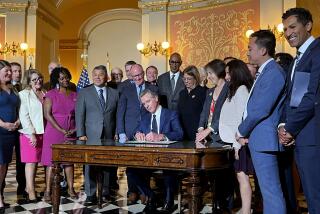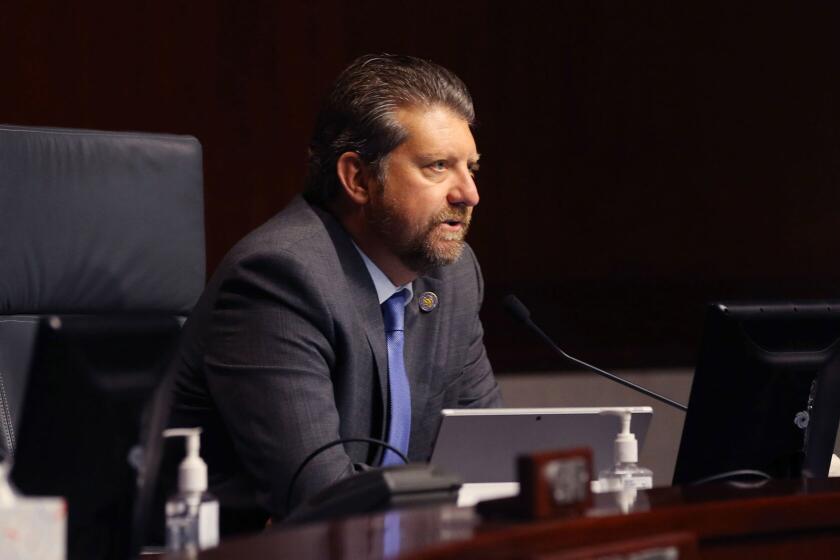Senate Panel OKs Diluted Car Insurance Plan
- Share via
SACRAMENTO — A weakened version of proposed pay-at-the-pump car insurance was narrowly approved by a Senate committee Wednesday, but the measure remains in deep trouble.
The bill, by Sen. Art Torres (D-Los Angeles), was approved with no votes to spare in the Senate Insurance Committee and forwarded to the Judiciary Committee, where its restrictions on no-fault lawsuits are certain to face heavy attack from personal-injury attorneys.
Sen. Diane Watson (D-Los Angeles), who had voiced concerns about the merits of the bill last week, arrived late to cast the decisive sixth favorable vote in the 11-member Insurance Committee.
Torres, although delighted at approval of his bill by the Insurance Committee, which he chairs, voiced apprehension about the measure’s chances of clearing the Judiciary Committee.
Nevertheless, he said, approval by his committee demonstrated that “we are willing to look at new ideas, new reforms and willing to save (motorists) on the cost of their auto insurance.”
He and other supporters contend that the proposal would reduce the car insurance costs of the typical California motorist by about 25%.
Under the bill, which adopts ideas advanced by economics writer Andrew Tobias, motorists would pay an extra 28 cents per gallon of gas as the price of their premium on a no-frills basic auto insurance policy. More extensive coverage would be optional.
Every private driver who bought gasoline would be covered, thus removing the need for costly coverage to protect against uninsured motorists, who account for about one out of four drivers in California. Many are low-income residents of the inner cities who cannot afford insurance.
But Torres encountered stiff opposition from a variety of interests, including segments of the influential insurance industry, politically powerful trial lawyers, oil companies and Voter Revolt, sponsor of the Proposition 103 car insurance reform initiative in 1988.
The proposal has drawn support from state Insurance Commissioner John Garamendi, a potential candidate for governor in 1994, Consumers Union, representatives of insurance agents and minority groups.
Insurance companies have embraced the no-fault provisions, but complained that the pay-at-the-pump method of financing the program would not necessarily save money for California drivers, contending that rural motorists who drive long distances and consume more gasoline would end up subsidizing urban Californians who drive less.
Originally, Torres proposed unlimited medical and hospital coverage for Californians who are involved in accidents, a feature opposed by insurers, and advocated a maximum of $24,000 to offset the loss of wages of accident victims.
However, to overcome opposition, Torres agreed to weaken the measure. For instance, medical coverage was dropped to $15,000 and replacement of wages was scaled down to $12,000.
Likewise, the no-fault provisions were substantially rewritten to enable a motorist who suffered certain serious injuries, such as dismemberment or a permanent disability, to file suit for pain and suffering damages. New York has had a similar system of allowing recovery of pain and suffering damages since 1977.
More to Read
Get the L.A. Times Politics newsletter
Deeply reported insights into legislation, politics and policy from Sacramento, Washington and beyond. In your inbox twice per week.
You may occasionally receive promotional content from the Los Angeles Times.










